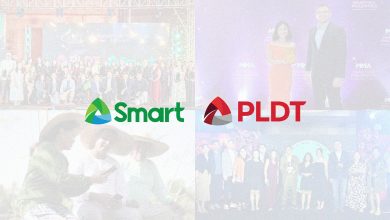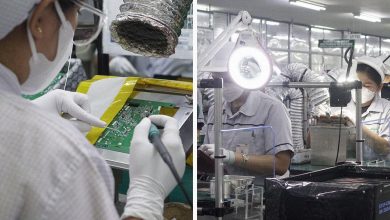by Raymund Villanueva, Marketing Head at Voyager Innovations
When I was approached by a recruiter over at LinkedIn to join Voyager Innovations, I must admit that I hesitated. Although now known as the digital innovations arm of PLDT and Smart Communications, Inc. (Smart), Voyager Innovations was still an unknown entity back then. I would be leaving my growing corporate career leading the global digital marketing efforts of fashion retailer Gap in San Francisco to start anew in the Philippines, where I grew up but hadn’t lived for almost a decade.
Yet this challenge, I knew, was also an opportunity. If I could help build digital brands at Voyager in the Philippines and bring them to the world, I could simultaneously change how marketing was performed in the country, drawing on the best practices I had gleaned from my time in the US. Like other Filipinos who work abroad for a number of years, I could bring back something far more valuable than just dollars—I could return home with knowledge.
Growing pains
The initial months at Voyager were tough. As a corporate spin-off startup, we built everything from the ground up using frameworks that were different from our corporate headquarters. Our charter was to take a fresh look at the digital industry from the eyes of an emerging market like the Philippines. We tried to address it as best we could, such as by giving Voyager relative autonomy as a distinct unit. We even went as far as to physically locate it in Ortigas and not within the premises of Smart in Makati City.
The move proved fruitful. We were given freedom to think and make new products and services, even if it was relatively disruptive of some of our legacy businesses, and we were free to approach the market differently. Over the course of the next 24 months, we would roll out more than a dozen different digital products and brands.
To the casual observer, it might have seemed we were throwing anything at the wall to see what stuck in creating new revenue streams. As with global technology companies, a continuous stream of rapid, relentless and relevant innovations is needed and Voyager Innovations, together with our sister unit, digital financial services leader Smart eMoney, Inc., are the lean, fighting innovation machines.
The creation of each of these products and brands—and even the order in which they were created—was very deliberate. The sum goal of Voyager is to build platforms that will power the digital ecosystem for the Philippines and other emerging markets. This is a lot harder than it sounds.
Building a digital ecosystem
It’s important to first bring Filipinos online and to drive internet penetration in the country. To accomplish this goal, we created SafeZone, a platform through which enterprises can sponsor free data for users. SafeZone is an innovation from SmartNet. What we did was to make it available for enterprises as part of their customer and marketing efforts.
Once we get more Filipinos online, we need to get them over another barrier: the lack of credit cards in the Philippines, which are required for most online transactions (even if cash on delivery is an occasional alternative). Most estimates place credit card use between only 1% and 5%, which is far from what it should be if the Philippines is to continue its economic rise in Southeast Asia.
To address the low credit card penetration, we created PayMaya, based on a financial technology that gives a customer a virtual VISA card just by downloading the mobile app. This product allows Filipinos who would otherwise not be able to shop online to experience all the benefits of the digital economy, once they “load up” their PayMaya app.
After arming people online with the means to purchase goods, we need to give them use cases, or opportunities to transact. To this end, Voyager created Takatack, an online shopping discovery platform that is the largest in the Philippines in the number of products that it offers. Across all these are partnerships that we’ve forged with some of the biggest names in digital life – Uber, Airbnb, Lazada, Zalora, foodpanda and the like.
SafeZone, PayMaya and Takatack are just three of the many innovations that we’ve launched in just over two years. Building these brands, one by one, with the greater goal of creating a full-fledged ecosystem, has been the greatest challenge of my life. Even in hindsight, with much of the legwork done, the challenges remain clear – brand-building falls directly within VYGR and PYMY, the digital marketing teams of Voyager Innovations and Smart eMoney, Inc. respectively which I lead.
Innovative marketing frameworks
As an organization akin to a startup, we also had a very limited marketing budget and an even more limited time to launch. Launching more than a dozen brands within a 12-month period might seem like an impossible task. However, we decided to implement new marketing frameworks. Doing “digital” marketing in the US and EU is almost non-trivial, where 30 to 50% of the total marketing budget flowing toward digital channels leverage creativity, technology, and analytics to create auto-optimizing creative marketing efforts. We changed the marketing formula here in Voyager as well, focusing 70 to 90% of our efforts purely on digital marketing channels. For quicker coordination and to save on resources, we also decided to do almost everything in-house.
We built a team of growth hackers here in Voyager innovations, and we can spend our marketing budget in any number of ways. Our task is how to do so most efficiently and cost-effectively. I am proud that I have instilled in every member of my team a sense of being data-driven. We care about numbers, numbers, and more numbers. We want to know how much something really costs, how many people click on our links, and how effectively we are converting site visitors/ apps into customers, repeat customers and then ambassadors of our brands. The mix of creativity and analytics really comes into play with growth hacking. It is a science of continuous creative marketing experiments and executions.
In short, we are creating an environment truly rooted in performance marketing, which I see as not only selling Filipinos the promise of a digital economy, but the Philippines itself—our potential, our future, our fate.










